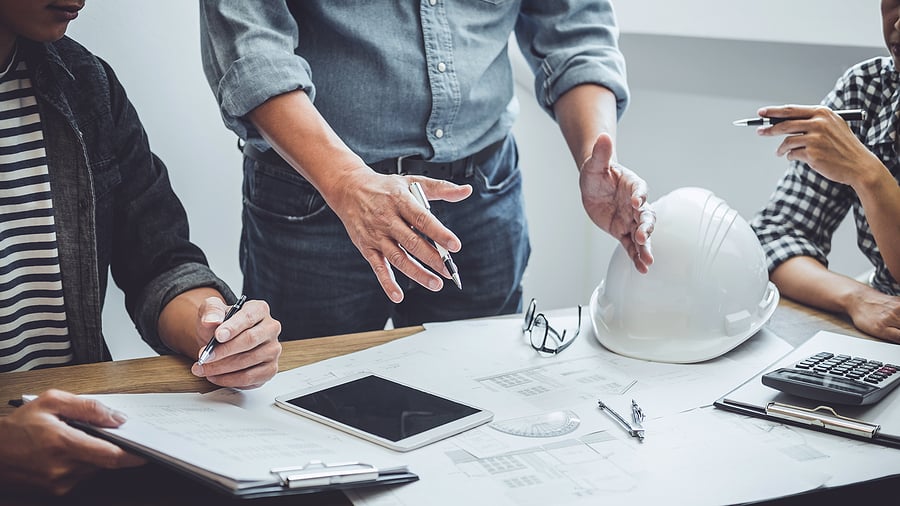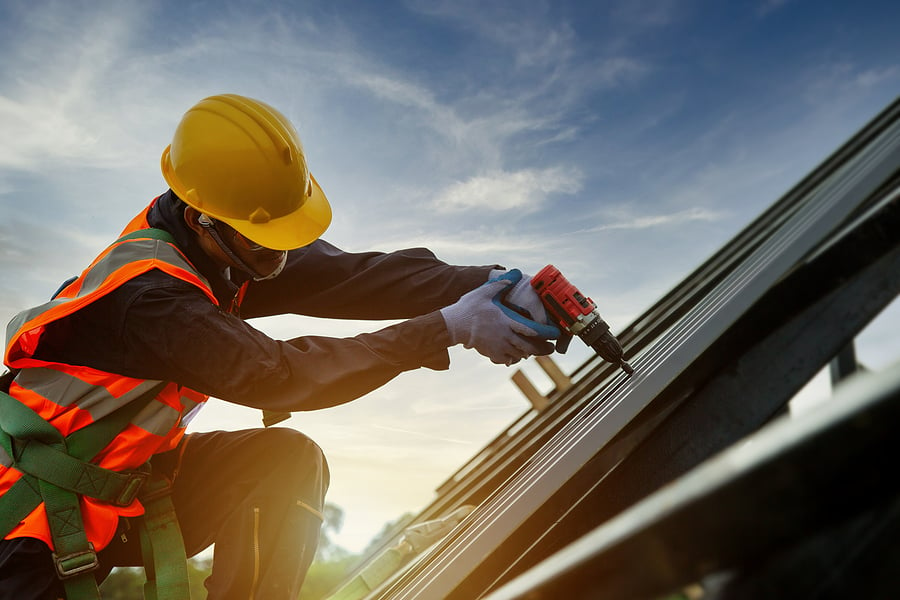Health & Safety Responsibilities as defined in the CDM 2015 Regulations

CDM stands for the Construction (Design and Management) Regulations - a set of health and safety regulations that apply to every construction project in Great Britain. The purpose of the CDM regulations is to improve health and safety in construction work, both during the project, and for any future work, use and maintenance of the building or structure. Consequently the CDM regulations place several key duties on virtually everyone involved in construction work, particularly on key members of the project team such as the client, designers and contractors.
The Project Client Role
The client ensures that the construction project is set up so that it is carried
out from start to finish in a way that adequately controls the risks to the health
and safety of those who may be affected. However as a domestic client you are not required to carry out the duties placed on commercial clients, these will transfer to the contractor.
The project client must ensure:
- Appropriate arrangements are in place to manage the construction project – including sufficient time and resources.
- The above arrangements are maintained throughout the project duration.
- Any persons or organisations they appoint are competent.
- If the project involves more than one contractor, the Client must appoint a Principal Contractor and Principal Designer in writing. Where the client fails to appoint someone in these roles, they must fulfil these duties.
- Existing pre-construction information relevant to the project is provided as soon as practicable to anyone involved in the project that requires it.
- That a Construction Phase Plan is drawn up by the Principal Contractor (where the project involves more than one contractor) or the contractor (if only one is engaged) prior to construction beginning.
- That the Principal Designer prepares a Health and Safety File.
- That the Principal Contractor and Principal Designer fulfil their duties.
- That there is co-operation and sharing of necessary information between anyone involved in the project.
- That the project is notified, where it will last longer than 30 working days and have more than 20 workers working simultaneously or exceed 500 person days.

The Principal Contractor Role
The role of principal contractor is not a new one, but their responsibilities have changed slightly from the 2007 regulations. Under the 2015 CDM Regulations a contractor must possess the skills, knowledge, and experience, and (if an organisation) the organisational capability necessary to carry out their role effectively given the scale and complexity of the project and the nature of the health and safety risks involved.
The role of principal contractor involves:
- Planning, managing, monitoring and coordinating the construction phase of a project.
- Consulting and engaging with workers.
- Liaising with the client and principal designer.
- Ensuring anyone they appoint has the necessary skills, knowledge, and experience and, where they are an organisation, the organisational capability to carry out the work in a way that secures health and safety.
- Coordinating the work of contractors.
- Ensuring that the contractors under their control cooperate with each other.
- Ensuring suitable site inductions are provided.
- Ensuring reasonable steps are taken to prevent unauthorised access.
- Ensuring that suitable welfare facilities are provided and maintained throughout the construction phase.
- Before the construction site is set up, preparing, reviewing and revising the construction phase plan for the project setting out health and safety arrangements and site rules.
- Ensuring that the construction phase plan is appropriately reviewed, updated and revised during the construction phase.
- Providing the principal designer with any information in the principal contractor’s possession relevant to the health and safety file.
- If the principal designer’s appointment finishes before the end of the project, the health and safety file must be passed to the principal contractor for the remainder of the project. The principal contractor must then take on the responsibility for reviewing, updating and revising it and passing it to the client when the project finishes.
The Principal Designer Role
Designer duties remain similar to those in CDM 2007 although they are required to reduce or control risks through the design process and provide risk information with design drawings, refer risks that cannot be reduced or controlled through design to the PD and set a clear hierarchy for design risk management. Many duties will take place before work starts on site like estimating, planning and designing. However, the principal designer duties don't stop when construction work starts, their responsibilities carry on through to project completion.
The role of principal designer involves:
- Plan, manage and monitor the pre-construction phase
- Coordinate matters relating to health and safety, so that the project can be carried out without risks to health or safety
- Consider health and safety when design, technical and organisational aspects are being decided
- Consider health and safety when planning the various items or stages of work
- Consider health and safety when estimating the time required to complete work or stages
- Take into account the general principles of prevention and contents of any construction phase plan or health and safety file
- Identify and eliminate or control foreseeable risks to the health or safety of any person affected by the construction work
- Identify and eliminate or control foreseeable risks to the health or safety in future use, maintenance or cleaning
- Ensure designers comply with CDM duties
- Ensure that everyone working on the pre-construction phase cooperates with each other
- Assist the client in the provision of the pre-construction information
- Provide pre-construction information to every designer and contractor appointed, or being considered
- Liaise with the principal contractor
- Share information relevant to planning, managing and monitoring of the construction phase
- Prepare a health and safety file, and ensure it is appropriately reviewed, updated and revised due to any changes that have occurred
If there’s only one contractor . . .
However, on projects with only one contractor, there are a few changes to the CDM duties that apply to the project. For a project to fall under the single contractor definition it will only involve one contractor, from start to finish. If the contractor appointed to do the work uses subcontractors, or the client brings in additional contractors at any stage, then the project is not a single contractor project.
Some roles have additional duties, and some have reduced duties. Some roles, like the principal designer and principal contractor, are removed altogether, with many of their duties passed to other members of the project team.
The Client
The client no longer needs to appoint a principal contractor. As there is only one contractor, that contractor is automatically in control. There is also no legal requirement to appoint a principal designer on projects with only one contractor. Where a principal designer isn’t appointed the client has to provide the pre-construction information without the help and support of a principal designer. In practice, as it is a contractors duty to ensure that the client is aware of their own CDM duties, and the contractor will need this information to plan the work safely, this will often require the contractor to provide extra assistance to the client during the pre-construction phase.
The Contractor
As there is no principal contractor to take charge of the construction phase, this responsibility falls to the single contractor involved in the project. In theory, the coordination and cooperation on site should be more straightforward with only one contractor, working with their own team. Single contractor duties include the provision of site inductions, securing the site, providing welfare facilities, estimating timescales and planning stages of work.
Designers
Designers’ duties don't change too much on projects with only one contractor but it can mean more work when it comes to completing their CDM responsibilities e.g designers need to make sure the client is aware of client duties. Where there is no principal designer on single contractor projects, designers need to ensure arrangements are in place to manage communication and sharing of information between themselves and the client and contractor.
In summary the requirements of the CDM don't just fall on one person to take care of. Each of the duty holders needs to work together to make sure that the project can be carried out without risk to health and safety. This means planning the work and completing the work safely on site. It also means making sure that future use, cleaning and maintenance can be carried out safely.
About Lisa Robinson
Lisa - word smith to the gods.
Tags: Construction
